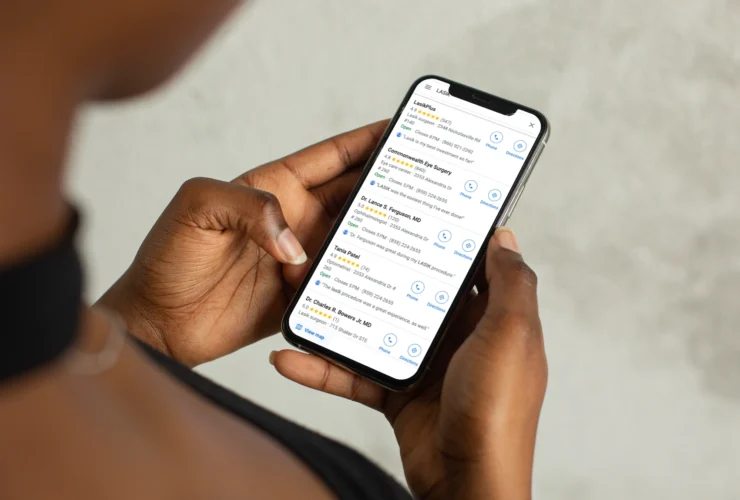Google Page Experience Update: Why it Matters for Healthcare Providers
Last year, Google announced their “Core Web Vitals” algorithm update, which is designed to elevate websites that deliver an exceptional user experience.
The algorithm update was originally scheduled to release in May of 2020. In light of the pandemic and the challenges many businesses have faced, Google delayed the release date to mid-June to give webmasters extra time to make the necessary changes.
This algorithm update means that practice websites that fail to meet the thresholds Google sets will likely see declines in their rankings, which means less website traffic and fewer patients. Medical practices need to prepare for these changes now to mitigate any potential negative effects.
What is the Page Experience Update?
The “Page Experience” update, as it’s being called, is Google’s latest attempt to focus on user experience. It includes three new metrics that Google calls “Core Web Vitals.”
Google has made minor changes to its algorithm in past years that dance around user experience, such as promoting sites that feature HTTPS or demoting sites that aren’t mobile-friendly. But this update is the first time the company has set quantitative goals for webmasters to hit.
What Are Core Web Vitals?
The three new Core Web Vitals are:
- Largest Contentful Paint (LCP): LCP measures how long it takes a user to see the largest piece of content on a page. According to Google, “To provide a good user experience, LCP should occur within 2.5 seconds of when the page first starts loading.”
- First Input Delay (FID): FID “measures interactivity – the time from when a user first interacts with a page to the time when the browser is actually able to respond to that interaction. To provide a good user experience, pages should have an FID of less than 100 milliseconds.”
- Cumulative Layout Shift (CLS): CLS measures visual stability. Google says CLS “looks at how much visible content shifted on the website as well as the distance the elements impacted were shifted. To provide a good user experience, pages should maintain a CLS of less than 0.1.”

A diagram of the new Core Web Vitals and page experience metrics.
It is important to note that this change is expected to be minor at first, but it is nevertheless very important. Google has given guidance that Core Web Vitals may be a “tie-breaking” factor between two sites that are otherwise the same.
However, this is a major moment, as it is the first time Google has released a quantifiable set of standards that site owners must meet. Given Google’s past record of algorithm updates, we can only assume that Core Web Vitals and other measures of user experience will grow in their importance over time.
How Doctors Should Prepare for Google’s Upcoming Page Experience Update
Ok, so a big change is coming. What can you do now so that your practice website reaps the benefits?
Many of the recommendations to improve your site may be things you’re already doing as part of your SEO strategy. If not, these are high-level action items to consider as you work toward creating a better user experience for your target audience.
Understand (and Improve) Your Core Web Vital Scores
The first step is to know where you stand.
Google has a new Core Web vitals report in Google Search Console that allows you to view your current scores and shows you where you need to improve. Third-party sites like GTMetrix also measure these three metrics.
Once you know how you rank, Google offers helpful guides on how to optimize your pages for LCP, FID, and CLS.
These metrics are inherently a bit technical, so you will likely need the help of a developer to modify your site to meet Google’s standards.
Avoid Interstitials
Some pop-ups are okay, but intrusive interstitials should be avoided. Not only are these interstitials bad for user experience, but they directly contribute to Cumulative Layout Shift and First Input Delay…so if you have any, you’re likely to fail those two tests.
Secure Your Site and Make It Mobile-Friendly
We’ve written at length about the importance of providing your patients with a safe browsing experience through SSL certificates that encrypt all communications to and from your site (plus, these are required per HIPAA regulations).
We’ve also covered the importance of a mobile-friendly site: more than 60% of all Internet traffic comes from mobile devices, after all.
Both of these are confirmed pieces of Google’s algorithm, so you need to make sure you’ve covered all of your bases.
By making sure the rest of your site – in addition to the new Core Web Vitals – is in compliance with Google’s recommendations, you should be poised to see a boost in your rankings and more patients coming through your door.
If you need assistance with your practice’s rankings on Google, reach out to our team – we’d be happy to help you!







